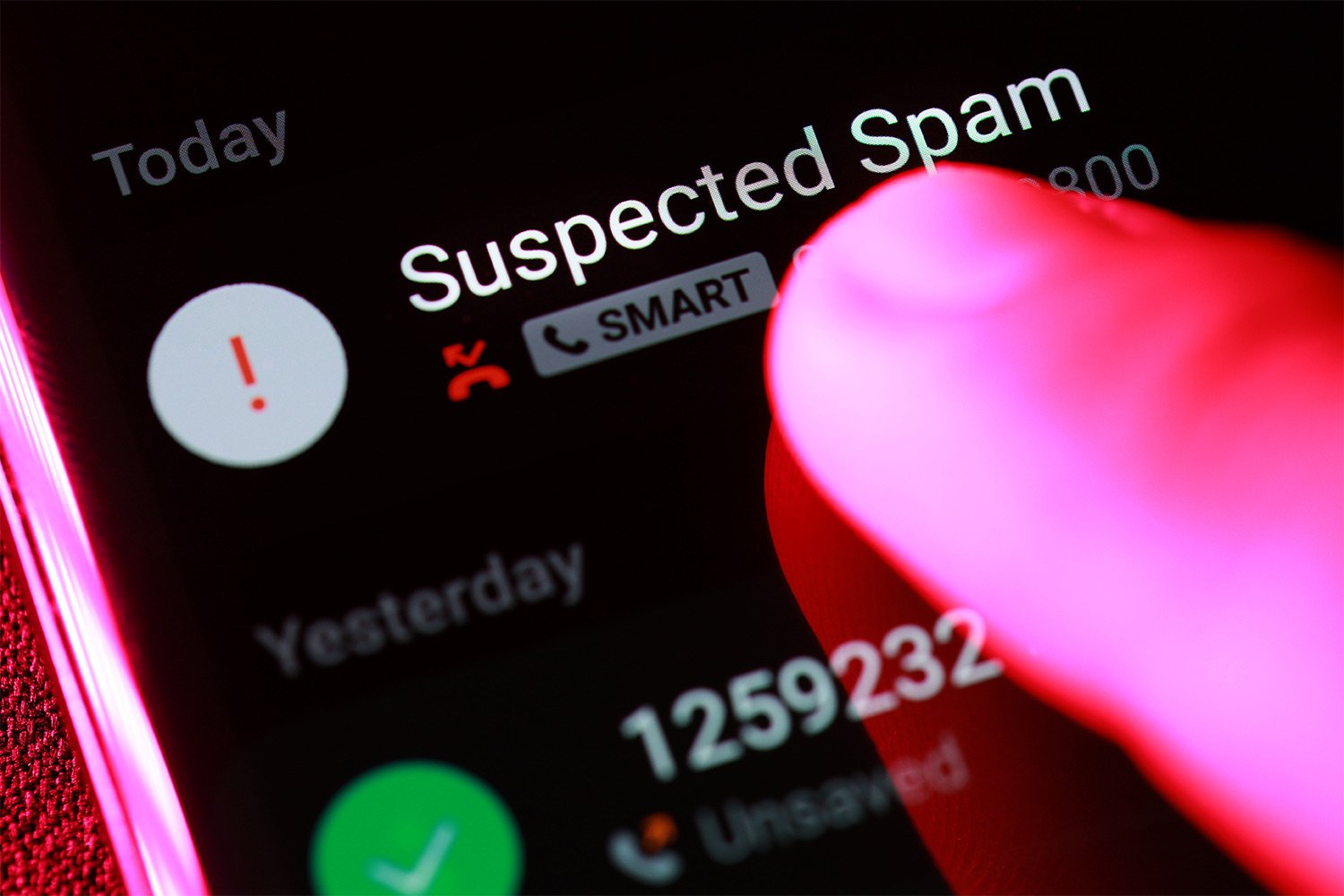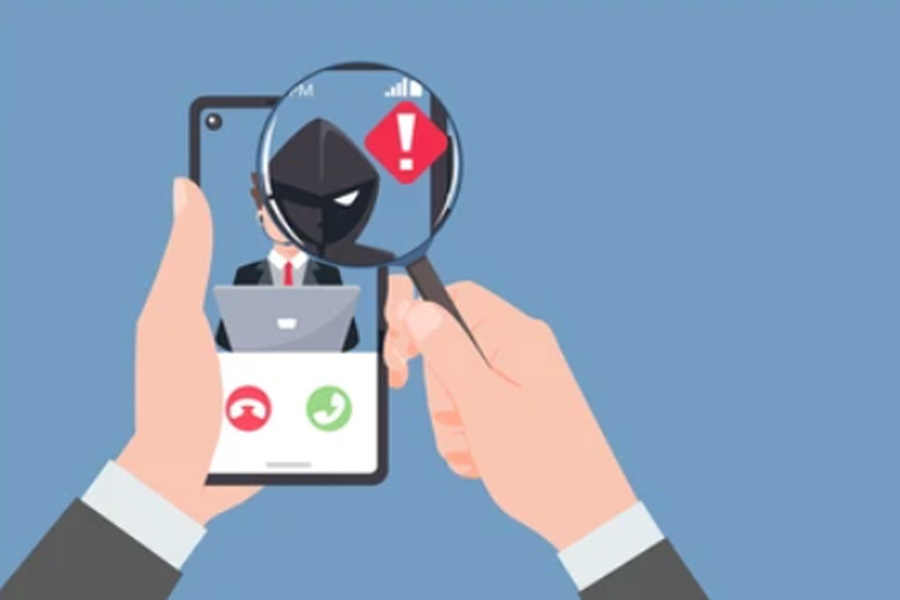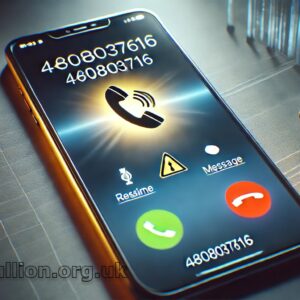Have you ever received a call from a number that leaves you feeling puzzled? Perhaps it’s a 4808037616 phone, ringing in at an odd hour. Like many, you might find such numbers to be suspicious, evoking a mix of curiosity and concern. Let’s take a closer look at this phone number, explore its background, and learn how to better protect ourselves against unwanted calls.
1. The Basics of 4808037616
Have you ever wondered about the hidden stories behind phone numbers? Each number, like 4808037616 phones, has its unique background. Let’s uncover the basics of this particular number.
Origins of the Phone Number
The number 4808037616 hails from the 480 area code. This area code was established in 1999, separating from the 602 area code as a means to accommodate the growing population in the region. The number you see likely represents either a landline or a mobile connection—though pinpointing can be tricky at times.
In the vast universe of numbers, understanding where each comes from is essential. Consider it like knowing the roots of a language; it provides context. Have you ever rang a number only to feel a bit puzzled about its location?
Geographic Location Linked to It
The 480 area code primarily serves the Phoenix metropolitan area. This gorgeous region is notable for its sunny weather, Sedona red rocks, and vibrant culture. So when you see a number starting with 480, you can be fairly certain it’s calling from this bustling area. This knowledge can be your first line of defense against potential scams or unwanted telemarketing calls that often originate from unknown numbers.
Common Usage of This Number Type
Numbers under this area code are common among local businesses and residents. You might find 480 numbers used by restaurants, shops, service providers, and local government offices. The familiarity of these numbers can encourage trust. After all, who wants to deal with a random area code that isn’t local?
- Small Businesses: Many local entrepreneurs often register their businesses under the 480 area code to emphasize their connection to the community.
- Residential Connections: Homeowners in Phoenix might have family and friends using similar numbers, increasing the chances of a friendly call.
- Telemarketers: Sadly, not everything is sunshine. Scammers might use 480 numbers to masquerade as local businesses.
Potentially Associated Carriers
Several carriers serve the 480 area code. This includes major players as well as local providers. Some notable examples of carriers operating in this region are:
- AT&T
- Verizon
- T-Mobile
- Cox Communications
Choosing a carrier can impact the call quality and reliability you experience. How do you decide which carrier fits you best? Well, you might check their service coverage in your area.
Understanding Area Codes
Understanding area codes is crucial because they can provide context about the legitimacy of calls. Have you ever received a call that felt suspicious? The area of origin can help you verify its trustworthiness. Like identifying the source of a rumor, knowing the origin of a call can guide your reactions.
“Every number has a story; it’s about finding it.” – Caller ID Anonymous
Chart of the 480 Area Code
The following chart showcases the geographic service area of the 480 area code.
| Feature | Details |
| Area Code | 480 |
| Primary Service Area | Phoenix Metropolitan Area |
In navigating the world of phone numbers, knowing their origins provides greater clarity and aids your understanding of whom you’re addressing. Whether it’s a local business or a long-lost relative, every number has its significance.
2. Recognizing Spam and Telemarketing Calls

Spam calls can be a major nuisance in our lives. These intrusive calls disrupt your day and can sometimes lead to unwanted solicitations or scams. So, what exactly qualifies as spam? In simple terms, spam calls are unsolicited communications that attempt to sell you something or promote services you didn’t ask for. They often originate from unknown numbers or robotic voices. But recognizing spam calls isn’t just about avoiding annoyance. It’s crucial for protecting yourself.
What Qualifies as Spam?
- Unsolicited Sales Calls: If you didn’t ask for the call, it’s possibly spam.
- Robot Calls: Any call with automated messages is a strong candidate for spam.
- Scam Impersonations: Beware if they claim to be from trusted organizations.
How to Identify Your Caller
Sometimes, it can be tricky to tell if a call is legitimate. Fortunately, you have options.
- Caller ID: Always check who’s calling. If a number looks odd or is unfamiliar, proceed with caution.
- Research: Google the number or use apps that identify spam callers.
- Ask Questions: If you answer, ask them to identify themselves. Legitimate callers should have no problem doing so.
Remember, if it feels off, it often is. Trust your instincts.
Common Characteristics of Telemarketing Calls
How can you spot a telemarketing call? Here are some telltale signs:
- High Call Volume: Telemarketers often call in large numbers.
- Silence Before Response: If you answer and there’s a pause before they speak, it could be a robocall.
- Generic Greetings: E.g., “Dear customer” instead of using your name.
These characteristics are like red flags. Pay attention!
Consumer Protection Laws
It’s important to know your rights when it comes to phone calls. There are consumer protection laws designed to combat telemarketing calls:
- Do Not Call Registry: You can register your number to reduce unwanted calls.
- Robocall Restrictions: There are strict rules governing robocalls to protect consumers.
Familiarizing yourself with these laws can provide you with a strong foundation for defending against spam calls.
“Spam calls are like unwanted guests at a party.” – Sarah Caller
Recognizing Potential Spam Is Crucial
Understanding and identifying spam calls is essential in today’s world. You need to be on high alert. Think about it, nobody likes having their time wasted. You deserve respect and privacy. Learn how to tell the difference between a personal call and potential spam.
As you get more familiar with the signs of spam calls, you’ll feel more empowered to handle them. Whether it’s a straightforward no-thanks when answering, or the option to let unfamiliar calls go to voicemail, it’s up to you to take control.
| Statistic | Percentage |
| Spam or Robocalls | Approximately 60% |
In the end, managing your phone calls starts with being informed. Knowledge is your best ally. By learning how to identify spam, using protections like the Do Not Call Registry, and remembering common characteristics of telemarketing calls, you can safeguard your time and peace of mind.
3. Privacy and Security Risks

In this age of technology, privacy and security risks are at the forefront of many people’s minds. You may have noticed an increase in unknown calls lately. Along with everyday communication, these calls pose significant risks that can lead to the exposure of your personal information. Understanding this landscape is critical, especially when studies show that 80% of users fear data exposure through unknown calls.
Personal Information Exposure
Have you ever thought about what happens when you answer an unknown call? Your data could be at stake. Scammers often masquerade as legitimate callers, hoping to extract vital information from you. This can include anything from your name and address to bank details. It’s shocking to think that a casual conversation could lead to identity theft. Protecting your information is more important than ever.
Risks of Answering Unknown Calls
- Scams: Many unknown calls are not what they seem.
- Phishing attempts: Scammers might try to trick you into giving away personal details.
- Malware risks: Calling back numbers can risk malware infections or other security problems.
Think about it. Would you give your information to a stranger on the street? Probably not! Yet when a phone rings, some may feel the urge to answer. This could be a dangerous habit.
Tracking Unknown Callers
You might wonder if there’s a way to track these unknown numbers. There are apps designed for this purpose. They can help identify who is calling. Some also allow for reporting and blocking suspicious numbers. By using these tools, you can take back control over your phone and keep unwanted callers at bay.
Preventive Measures for Privacy
So how can you protect yourself? Here are a few straightforward steps:
- Don’t answer unknown calls: If you don’t recognize the number, let it go to voicemail.
- Utilize call-blocking apps: These apps can screen calls, helping you know which ones to avoid.
- Keep personal info personal: Never share sensitive details over the phone unless you’re sure of who you’re speaking to.
- Enable caller ID: This can help you identify potential spam or scam numbers, saving you time and stress.
Understanding these potential threats can help mitigate risks. Knowing what information not to share is vital. As the saying goes,
“Your privacy should always come first, especially over the phone.” – Tech Expert
Takeaway on Privacy
In summary, privacy is a growing concern. You need to know how to protect it effectively. By being aware of the risks associated with unknown calls, you can make informed decisions. This knowledge empowers you to maintain your privacy while navigating the murky waters of phone communications. Always stay vigilant, and don’t let unknown callers compromise your safety.
Remember, your phone should be a tool for connection, not a gateway to vulnerability. Take charge of your privacy today!
4. Steps to Identify the Caller Behind 4808037616 phone

Receiving a call from an unknown number can be frustrating. You might wonder, who is trying to reach me? What do they want? When it comes to identifying the caller behind the 4808037616 phone, you have several tools at your disposal. Let’s explore them and help you reclaim your peace of mind.
1. Using Reverse Phone Lookup Services
One of the most straightforward methods is to use a reverse phone lookup service. These online tools allow you to enter a phone number and get details about the caller. Often, the results include the caller’s name, location, and even their social media profiles.
However, there’s a caveat. Not all reverse lookup services are created equal. Some may charge a fee, while others provide only limited information for free. It’s reported that these services have about 50% accuracy in identifying unknown callers. This means sometimes you might not get the complete picture, but it’s still worth a shot.
- Try multiple lookup services to verify accuracy.
- Look for reviews or recommendations before using a service.
2. Social Media Inquiries
Have you thought about checking social media? It’s a great way to find information. Many people use their phone numbers for social media accounts. By entering the number into a platform, you might find a matching profile. This could give you a clearer idea of who the caller is.
Trying to track someone down on social media can feel a bit like being a detective, right? You might even find out what kind of person they are through their posts and interactions.
3. Reporting Suspicious Numbers
If the caller seems suspicious, you can report the number. Many regulatory agencies, like the Federal Trade Commission (FTC), have systems in place for this. Reporting not only protects you but also helps others avoid potential scams.
It might feel like a small action, but it contributes to making the calling landscape safer for everyone. If many people report the same number, action can be taken against it.
4. Apps Designed for Identifying Unknown Calls
In today’s smartphone-driven world, there are apps specifically designed for identifying unknown callers. Applications like TrueCaller and Hiya can identify businesses and personal numbers with relative ease. These apps often have large databases, making them quite effective.
Moreover, some apps feature community reviews. This means users can share their experiences about specific numbers. These insights can help you determine the legitimacy of a caller. Isn’t that powerful?
“Information is power, especially in today’s digital age.” – Privacy Advocate
Even within these apps, accuracy can vary. It’s important to stay vigilant and cross-check information from different sources. This can significantly enhance your chances of correctly identifying an unknown caller.
In Summary
In essence, identifying the caller behind 4808037616 doesn’t have to be a daunting task. You have to utilize the right technology and tools. Whether it’s using reverse lookup services, investigating on social media, reporting suspicious numbers, or utilizing call identification apps, you can efficiently unveil the identity of that elusive caller. Remember, the more resources you tap into, the better your chance of getting the answers you seek.
5. What to Do if You Receive a Call from 4808037616

Receiving an unexpected call from an unknown number can be unsettling. You might feel a rush of anxiety. What do you do? It’s important to remember that safety comes first. Here’s a guide to help you navigate this situation calmly and effectively.
Safety First: Do Not Engage
When the phone rings with a number you don’t recognize, your initial response might be to answer it. However, I urge you to resist that temptation. Why should you avoid engagement? Because not replying or engaging can prevent unwanted disturbances from happening again. As the Safety Guru wisely states,
“The best defense is a good offense; don’t engage, block instead.”
Engaging can sometimes lead to more problems, from annoyance to harassment.
How to Block the Number
If you decide not to answer, and you’ve already received calls from this number, it may be time to consider blocking it. Here’s how you can block a number on most smartphones:
- Go to your phone’s call history.
- Find the number you want to block.
- Tap on the number and look for the block option.
- Confirm the block!
Blocking unwanted calls is a proactive step to ensure peace of mind. Roughly 25% of people receiving unwanted calls choose to block them immediately. You are not alone in wanting to take control.
Reporting Calls to Authorities
If the calls you receive become harassing or threatening, it’s time to involve the authorities. You can report the number to local law enforcement or use the Federal Trade Commission (FTC) to report unwanted calls. Be prepared to provide details:
- The number that’s calling you.
- The frequency of calls.
- Any specifics about the nature of the calls?
Reporting calls helps authorities track down potential criminals and scam operations. Your report might contribute to stopping these unwanted calls for others too.
Steps for Handling Harassment
Persistent calls can escalate into harassment. If you find yourself in this situation, consider these steps:
- Keep a record: Document the dates and times of each call.
- Do not engage: As mentioned, engaging can lead to further harassment.
- Reach out to professionals: If necessary, consult with a lawyer or local authorities for more guidance.
Staying calm during unexpected calls is crucial. It can be challenging, but keeping your composure allows you to respond effectively. Ultimately, your safety and well-being should be your top priority.
Conclusion
After dealing with unwanted calls, it’s easy to feel overwhelmed. But by implementing these strategies, you can regain control. Remember to take action promptly. Whether you choose to block the number or report it, each step you take can help prevent further disturbances from unknown numbers.
6. Can You Trust Caller ID?

When that phone rings, your eyes often dart to the screen. You see a name, maybe even a photo. It’s caller ID doing its job, right? But can you truly trust it? Let’s explore the reliability of these systems and why you might need to be cautious.
The Reliability of Caller ID Systems
First, let’s tackle the reliability of caller ID systems. While they can be helpful, they are not infallible. Many people assume that if a name appears, it must be legit. This assumption can lead to trouble. Caller ID features are not foolproof. Technology is great, but it has limits. Have you ever received a call from a number that looks familiar, only to find it’s an unwanted solicitation? You’re not alone!
How Spoofing Works
Speaking of unwanted calls, let’s discuss *spoofing*. This is a technique used by scammers to disguise their phone numbers. They can make it appear as though the call is coming from a local area code or even a number you recognize. Spoofing incidences have increased by 40% in just the past two years. Wondering how they do this? It’s easier than you might think. They use spoofing software to change the number that shows up on your caller ID. As a result, you could be picking up a call from a scammer, thinking it’s a trusted friend or family member.
Impact of Caller ID on Responding to Calls
How does this affect how you respond to calls? Well, if you see a name or number you trust, you’re more likely to pick up the phone. But remember what Detective Callaway wisely said:
“Caller ID can sometimes be misleading; always keep your guard up.”
This means that even familiar numbers should be treated with caution.
Have you ever thought that this growing reliance on caller ID might keep you from answering important calls? Picture this scenario: important news from a doctor or potential job offer might be missed simply because the call came from a number without a recognizable name attached. It’s a double-edged sword.
Alternatives to Caller ID
So, what can you do instead of relying solely on caller ID? There are alternatives. For one, consider using call-blocking apps that identify spam calls. They may cross-reference the number against known spam lists and warn you before you pick it up. More sophisticated options even allow you to create personal block lists. Another option is to independently research numbers online. Sites like Whitepages or even simple Google searches can sometimes yield useful information about unfamiliar numbers.
Making Informed Choices
Understanding the strengths and weaknesses of caller ID can empower your decisions. Always be cautious. If a call seems off or feels wrong, it’s perfectly fine to let it go to voicemail. You can always check the message later. Alternatively, if it’s essential, the caller will often leave a message. Be smart about which calls you choose to answer.
In the end, arming yourself with knowledge about caller ID technologies makes all the difference. Knowing how to spot potential red flags could save you from unwanted headaches and protect your personal information.
Remember, being vigilant is key in an age where technology can mislead us.
7. Conclusion: Staying Informed and Safe

In a world where technology fosters convenience, it also brings along its share of risks. You might have received calls from unknown numbers, and if you have, you know how unsettling it can be. Even if it seems harmless, the potential for scams or fraud exists. Therefore, understanding how to handle these calls is vital.
Recap of Key Points
Throughout this blog, we’ve highlighted the significance of recognizing unknown callers. You learned about various tactics scammers use, such as spoofing. Spoofing allows scammers to disguise their numbers as legitimate ones. That’s why it’s easy to fall for their tricks.
Moreover, you were given specific steps to take when you receive an unknown call:
- Do not pick up unfamiliar numbers immediately.
- Verify the number online or through trusted applications.
- Do not share personal information, not even your name.
This knowledge is empowering. It can protect not only your data but also your peace of mind.
Final Tips for Handling Unknown Calls
Now, you may wonder what to do next time the phone rings with an unfamiliar number. Here are some final tips:
- Let the call go to voicemail. Most legitimate callers will leave a message.
- Use call-blocking apps that can help filter out unwanted calls.
- If the call seems suspicious, report it to your phone provider.
By taking these small actions, you create a layer of protection for yourself. Remember, if something feels off, trust your instincts.
Encouragement for Vigilance
Staying vigilant is one of the best defenses you can have. You are your first line of defense against unknown threats. So, always approach unknown numbers with caution.
You might think, “Why be worried about a simple call?” But think about it this way: Would you open your front door without knowing who’s on the other side? Probably not. Similarly, treat your phone line with the same caution.
Resources for Further Information
Knowledge is the key to safeguarding yourself. Here are a few resources that can help you stay informed:
- Federal Trade Commission (FTC)
- National Consumers League
- AARP’s Resources on Phone Scams
These resources provide valuable information about scams and how to protect yourself from them. Equip yourself with knowledge to make sure you never fall victim to deceit.
“Knowledge is the best protection against unknown threats.” – Cyber Safety Expert
In conclusion, being cautious today protects you tomorrow. Embrace the knowledge you’ve gained and stay safe. It’s okay to be skeptical. After all, it’s your safety that’s on the line. So, the next time you receive an unknown call, you’ll know just how to respond. Remember, you have the power to protect yourself from unwanted intrusions into your digital life. Stay informed.
8. Frequently Asked Questions About 4808037616
Is This Number Safe to Answer?
When it comes to answering a call from an unknown number like 4808037616, you may wonder: is it safe? The short answer is: not always. Unknown numbers can be associated with telemarketers or scammers. Before answering, consider these factors:
- Look for Number Reviews: A quick online search can reveal if others have reported this number as a scam.
- Check Your Call Blocker: If you use any call-blocking app, see if it flagged the number.
- Be Skeptical: If the call feels suspicious, trust your gut. It’s better to be safe than sorry.
Remember, it’s okay to let it go to voicemail. If it’s important, they’ll leave a message!
Can I Find Out Who Called Me?
Have you ever received a call you wish you could trace back? With unknown numbers, it’s tricky. You have a few options:
- Reverse Phone Lookup: Websites exist to help you find the caller’s information. They may reveal the source of the call.
- Search Social Media: Sometimes, numbers are linked to social profiles. A quick search might give clues.
- Trust Your Network: Ask friends or family if they recognize the number.
Still, privacy regulations mean that not every caller can be identified. If all else fails, you might just need to let it be.
What Should I Do If They Keep Calling?
Getting repeated calls from the same number can be irritating. So, what can you do? Here are your options:
- Ignore the Calls: If they won’t leave a message, it’s often best to just let them ring it out.
- Block the Number: Most phones allow you to block specific numbers. This way, you won’t hear from them again.
- Report the Caller: If the calls feel invasive, consider reporting them to your local authorities or the Federal Trade Commission (FTC).
Taking a stand against unwanted calls can often stop the issue before it escalates.
How Can I Prevent Spam Calls in the Future?
Who doesn’t want to reduce the number of spam calls they receive? Here are some proactive measures:
- Register with the National Do Not Call Registry: This can significantly lower telemarketing calls.
- Use Call-Blocking Apps: Many apps are available that automatically screen calls and identify spammers.
- Be Careful with Your Number: Avoid giving your phone number out too freely online or at retail shops.
- Review Your Privacy Settings: Regularly check the settings of any apps that may share your information.
Taking charge now can save you hassle down the line. It’s always about keeping your peace in a world filled with noise.
Addressing *common concerns* can provide clarity. When faced with unknown callers, you are not alone. It’s wise to ask questions, seek information, and find methods to secure your phone from unwanted interruptions.










